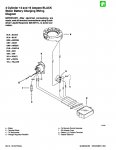georgia088
Cadet
- Joined
- Aug 14, 2017
- Messages
- 29
I have a 2003 90hp mercury outboard 2 stroke It has always ran perfect. A few weeks ago I blew main 20 amp fuse that’s under cowl. When it’s blown it will not turn Ignition on or crank. I traced every wire back and can not find a short anywhere. It only blows the fuse at WOT (5500-6000 rpms) I can ride all day long below this rpm with no problem. I have turned the key on and moved the throttle in every possible position and it will not blow fuse. I have wiggled every wire while running and it won t blow fuse.
I decided it must be the rectifier allowing to many amps causing the fuse to blow. I replaced the rectifier. I still blew fuse. Put another fuse in and now I am pretty sure I’ve blown the new rectifier. (no tach and voltage lower than 12v when running boat). When this happened the fuse didn’t blow. Any ideas? Only other thing I can think of is stator? But wouldn’t the boat run bad if the stator was bad/going bad? Thanks for any help!
I decided it must be the rectifier allowing to many amps causing the fuse to blow. I replaced the rectifier. I still blew fuse. Put another fuse in and now I am pretty sure I’ve blown the new rectifier. (no tach and voltage lower than 12v when running boat). When this happened the fuse didn’t blow. Any ideas? Only other thing I can think of is stator? But wouldn’t the boat run bad if the stator was bad/going bad? Thanks for any help!




















